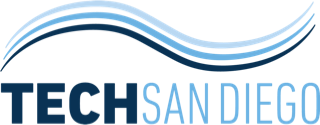From the Remote Desk is a guest blog featuring the expertise of many sources throughout the innovation economy. They do not necessarily reflect those of Tech San Diego, it’s Board or its membership. We hope the information shared below is inspirational, motivational, and informative. If you’d like to write for ‘From the Remote Desk’ and have a topic in mind, feel free to reach out to sara.spiva@techsd.org or kevin.carroll@techsd.org
Talent Acquisition Strategies for Human Capital Management

Talent Acquisition Challenges
Discussed below are some issues associated with talent acquisition.
Lack of Future-State Skill Sets
As organizations compete for relevancy, so does the need for leadership to prioritize rapid innovation. Without access to necessary skills, progress can be hindered for many organizations.
Cutting spending or decreasing the scope of learning and development programs can leave an organization unable to develop or understand the capabilities of its own employees. Reducing job and education requirements can help expand the talent pool and meet recruiting metrics, but it doesn’t help close the skill gap.
Remote Work as the Future
During the pandemic lockdown of 2020, organizations faced a huge workforce transformation. Much of the global workforce began working from home. This boosted engagement in remote work tools such as collaboration and video conferencing software, which helped make remote work the new standard. Working from home provided many benefits for employees, such as flexibility, decreased commute time, and increased time with family.
Many employers experienced an increase in employee performance during this time. Some disconnects have surfaced between organizations and their employees regarding remote work.
Impacts of Remote Work on Talent Acquisition
More employers are mandating that employees return to the office full-time or a few days per week. The challenge is that in most cases, employees prefer to work from home.
Many employees hired during lockdowns were led to believe that working from home was the standard. In other cases, employees in a work-from-home agreement relocated far from the office.
Shifting policies can drive employees to seek out organizations with flexible schedules.
Artificial Intelligence (AI) Talent Acquisition Issues
Talent acquisition technology can help streamline the recruiting process. While AI can help reduce costs, increase efficiency, and accelerate processes, it can also misinterpret candidates as unqualified, since it’s designed to find the exact criteria outlined in the job description.
According to the Harvard Business School, 88% of employers agree that many qualified skilled candidates are excluded by automated talent software for not matching the exact criteria established by the job description. That number rose to 94% in the case of middle-skilled workers.
AI can’t interpret skills over keywords the way a human being can, and it can’t consider the nuances of an applicant’s background, which could lead to a less qualified hire that ultimately impacts business performance.
Cultural Ratings
There’s an increasing amount of public feedback from candidates on job websites. Popular sites host established forums for employees to rate and write anonymously about the company, including culture, leadership style, compensation, and benefits.
Much like online shopping, job seekers can compare ratings and analyze comments as part of their job-seeking process.
Employee Retention Challenges
Employee retention has historically been attributed to manager relationships and compensation. Increasingly, employees are concerned with things like an organization’s commitment to the people who work for them.
Employees perceive organizational values and goals at a personal level and are looking for employers with an employee-first mentality willing to invest in listening, well-being, and flexible work schedules.
Overwork
Overworked employees are a serious problem in many organizations. This can cause employee stress, increase turnover, and lead to issues with productivity and customer satisfaction.
Contributing Factors
Some contributing factors connected to being overworked include:
- Reduced workforce
- High attrition or retirement rates
- Record low engagement
- Challenges acquiring talent
When fewer people are working, or people simply not doing the work, the work still needs to be done.
Lack of Development
Lacking career development and growth can be a reason why employees leave their jobs. Many organizations have been unsuccessful with career and development planning, focusing on those identified as high potential or high performing, while the remainder of the workforce is left to nurture their own development.
Employees seeking growth and new skills can end up disengaged, eventually seeking a new position elsewhere.
Acquisition and Retention Solutions
Identifying certain issues and improving them will be important to acquiring—and keeping—a valuable talent that grows along with your company.
Culture
The root cause of this problem stems from organizational culture and people philosophy, and not just shortcomings within the human resources (HR) department. Organizations need to focus on their employer and employee value propositions—the commitment between an employer, employee, and a potential applicant outlining what the company and culture will offer them in exchange for their talent, skills, and experience.
To evaluate your culture, you could:
- Analyze your organization’s brand perception
- Conduct external research to understand current workforce trends
- Conduct internal research by listening to all levels of the workforce
- Combine the research and prioritize based on common feedback
- Determine the commitment level of the organization to deliver upon the value promises
- Modernize and socialize new employee and employer value propositions
Leadership Training and Development
Much has been written about upskilling and preparing future leaders, with the following perspectives of skills needed in a true leader.
Business Perspective
Many CEOs are losing confidence in the ability of their chosen leaders to grow the company. CEOs are looking for skills such as agility, adaptability, critical thinking, and creativity.
Employee Perspective
Employees are looking for their leadership to possess skills such as listening, empathy, motivation, communication, empathy, and gratitude.
Developing Skills for Both the Business and the Employees
The reality is that both sets of skills and capabilities need to be developed. To evaluate your leadership and create training and development you can consider the following:
- Create a skills catalog based on the desired leadership skills
- Conduct a leadership skills assessment to understand the skills baseline
- Compare the results against current or future leadership needs
- Create a leadership development program for leader growth
- Build, buy, and outsource leadership development to create development opportunities
- Assign goals and development plans accordingly
- Conduct a frequent review of leadership skills to track or measure progress
Recruiting Experience
Candidates having a positive experience while seeking work is crucial, as this is one of the first ways an organization demonstrates its employer value proposition.
A bad experience could refer to not hearing back at all, out-of-date job descriptions, difficulty navigating the application process, and negative experiences with recruiters and managers.
As you consider enhancing your candidate experience, start with the following:
- Request feedback from the applicant or new hire
- Evaluate the feedback to determine if this is a people, process, or technology issues
- Design your recruiting experience with the candidate in mind, be they internal or external
When designing the experience, reflect on the employer value proposition: Are you clearly articulating the message and value? Are you able to provide this service at all times?
Career Progression
Career development and progression are among the most valuable things an organization can provide to its employees. Career progression can increase employee satisfaction, engagement, performance, and productivity. It’s also crucial for enabling the organization to have the right future skills for its workforce.
Organizations not only need to make employee development a priority, but they need to have the right programs to support this development. This is just the beginning.
Organizations also need to be clear on employee development expectations and provide the time needed.
Following are a few areas that can support your career development and progressions initiatives:
- Create career maps to allow an employee to think strategically about their next opportunity in the organization, this could be a promotion or lateral move
- Develop job rotation programs to allow employees to work full- or part-time in other areas to gain experience and determine areas of interest
- Consider dual career ladders so an employee can work towards two roles, like management and specialist
Flexible Work
Organizations need to create policies and stand behind their decisions.
Steps to Prepare for the Future of Work
To prepare for making decisions on the future of work, an organization might:
- Conduct a pulse survey or focus groups to determine employee’s preferences regarding flexible work
- Evaluate their input to determine viable options based on the business needs
- Develop strategies, programs, processes, and any changes in managerial approaches
- Launch changes under a pilot program to provide an opportunity to test, iterate, and make changes
- Allow for transparent communication with employees during a trial period, which can help reduce pushback if the program needs to be halted
Burnout
There’s no upside to burnout. Organizations should prioritize reducing workloads or creating a fulfilling environment, whether through work redistribution or leveraging technology to perform repetitive tasks.
A few opportunities to mitigate burnout include:
- Set boundaries for your employees by limiting their work schedules and requiring breaks
- Provide the opportunity to work remotely and offer different work environments to change the pace and scenery
- Focus on wellness and encourage employees to practice self-care, and offer employees funds or discounts for wellness practices like yoga or massage
- Provide support through an employee assistance program
- Establish mandatory breaks, half days, or consistent time-off to allow employees to have personal time
We’re Here to Help
If you have further questions about acquiring and retaining talent or Human Capital Advisory Services, please reach out to your Moss Adams professional.


